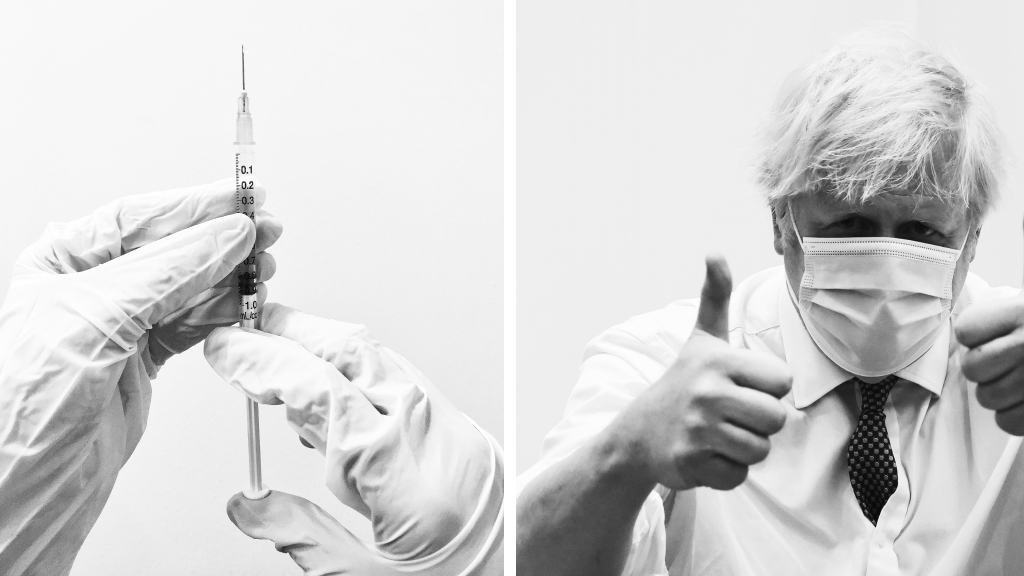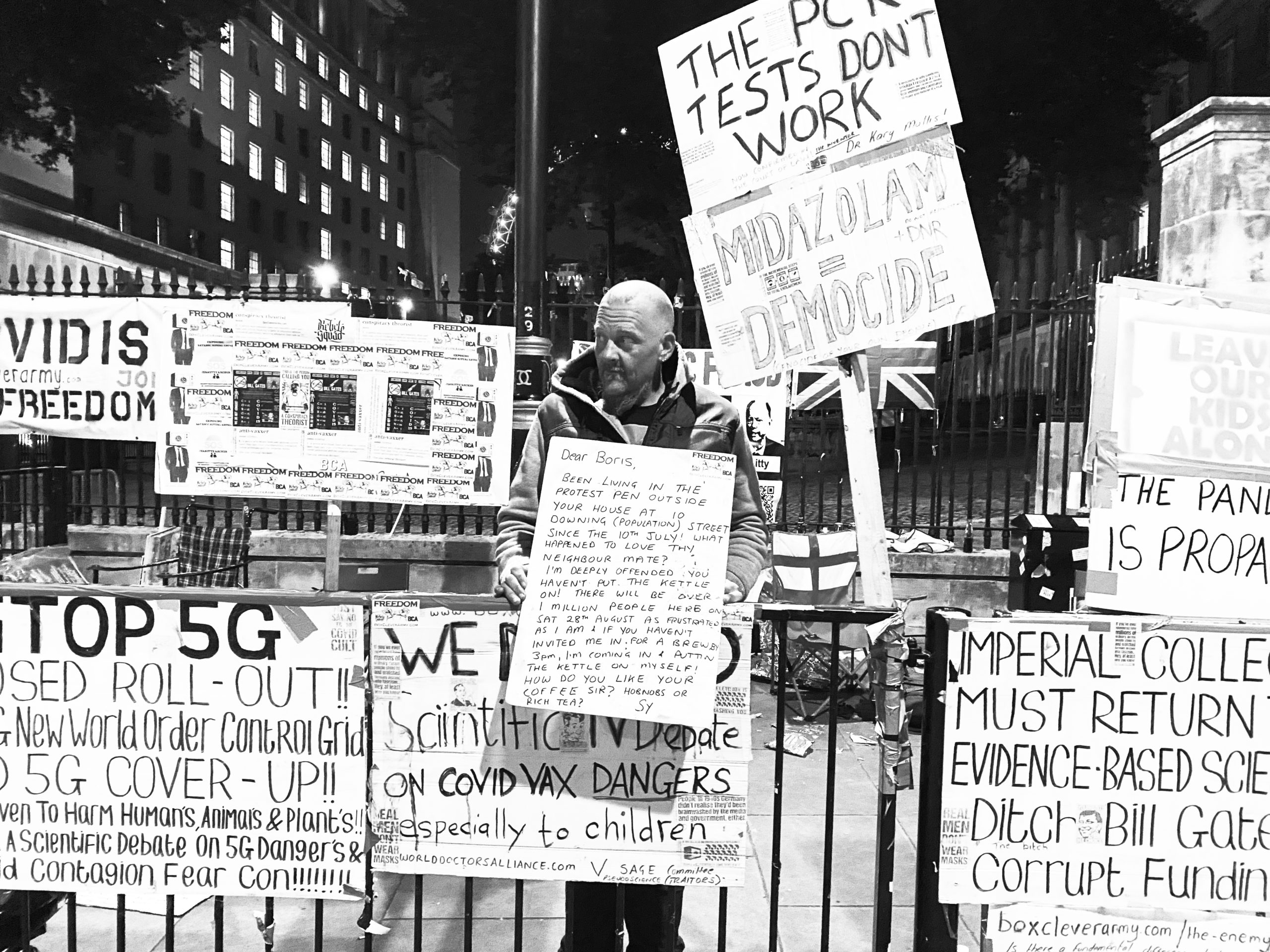New Politic
They think it’s all over. This is the message coming loud and clear from Government ministers as they remove Plan B restrictions in England and call for Britons to return to their workplaces en masse.
Boris Johnson went further still, suggesting that the last COVID-19 restrictions, including the need to self-isolate when infected, would end in March. “Were the data to allow,” he added, “I’d like to seek a vote in this House to bring that date forward.”
“We must learn to live with COVID-19 in the same way we have to live with flu”, said Johnson’s health secretary, Sajid Javid. “We cannot eradicate this virus and its future variants.”
The message was clear: return to normal because we have no intention of acting to keep case numbers low in England. Our “plan has worked” said Javid, “Omicron is in retreat”.
Johnson and Javid justified the end of restrictions on the grounds that Omicron cases were falling. They have since plateaued — perhaps due to still rising cases in children spreading into older groups through parents and siblings. Yet the Government refuse to change course, even doubling down on their insistence that headteachers do not “defy orders” not to require face masks in classrooms.
In part, as many newspapers noted, restrictions were summarily brought to an end as part of efforts to save Johnson’s political career. The supposedly “good news” of the end to restrictions would, they believe, take public minds off lockdown breaking Downing Street parties.
But the swift end of restrictions, like the reluctant nature of their introduction and laxity when compared to not just Scotland, Wales and Northern Ireland, but also every other European nation and many beyond, are part of a pattern.
Since the start of the pandemic the Government have seen COVID-19 as a race to be won. Mass infection, they believe, will get Britain to the finish line of herd immunity before the rest.
The cost of high cases, hospitalisations, deaths and long term ill health resulting from hospitalisations and Long COVID-19 has, for them, been a price worth paying on the way to achieving the world’s first hyper immune nation.
“We are leading Europe in the transition from pandemic to endemic and we’re leading the way in showing the world how you can live with COVID-19,” said Javid as restrictions were lifted.
“The action that this Government has taken in response to Omicron and the collective efforts of the British people have seen us become the most boosted country in Europe, the most tested country in Europe, and [have] the most antivirals per head in Europe,” he boasted, neglecting to mention that we also have the highest number of deaths in Europe.
Javid, Johnson and their ministers are wrong. COVID-19 cannot be treated like flu, and herd immunity cannot be achieved in a single nation in a world where millions of infections take place each day, most people remain unvaccinated and new variants can develop at any time.
COVID-19 was never like flu. The latter is a serious disease that kills unknown numbers each year but is, compared to COVID-19, mild for most people.
The World Health Organisation estimates that flu’s fatality rate is 0.05%, far lower than that of COVID-19. Flu is also more predictable. It leads to loss of life only for older or more frail people who are in many cases already approaching the end of life.
COVID-19 is different. In 2020 it killed around 30 times more people than would die in a bad flu year. Vaccines and boosters have brought that number down – Omicron is estimated to be around 6 times more likely to result in death than a bad flu for the vaccinated and boosted.
Yet for others — those who have chosen not to be vaccinated, the clinically vulnerable and extremely vulnerable, and almost everyone under the age of 11 due to the Government’s unwillingness, against international norms, to vaccinate 5 to 11 year olds — COVID-19 remains as dangerous as it was in 2020.
This is borne out by the evidence. Most of those hospitalised in the Omicron wave, in ICU beds or failing to survive have been unvaccinated. Children, who almost all remain unvaccinated, have been more susceptible to Omicron than earlier variants. Omicron is more likely to lead to child hospitalisation than Delta, with England seeing more admissions in under 18s in the first 9 days of 2022 than in the whole of the first wave.
Unlike flu, says NHS consultant and academic Dr Dan Goyal, COVID-19 “increases every adult’s chance of dying by the same proportion, assuming vaccine status is the same and access to healthcare remains.”
COVID-19 has far greater ability to harm younger, more healthy people. The percentage of excess deaths in those under 65 years (10% above average) remains higher than among older age groups (6-8% in those over 75).
COVID-19 also leads to far more severe complications. Flu can cause bacterial pneumonia, heart problems and post-viral syndromes. COVID-19 causes far more and far more severe complications, especially for those needing hospital treatment. The risks of many major disorders, including stroke, heart attacks and lung disease are increased, as well as the risk of Long COVID-19, now estimated to affect over a million people in the UK.
Javid and Johnson are wrong too in thinking that herd immunity, or — their new buzzword — endemicity, can be achieved in a single nation.
RECOMMENDED
Inside the World of a COVID Conspiracy Theorist
by Zeyd Anwar
How to End Britain’s Pandemic
by Zeyd Anwar
“This virus is moving towards an endemic state at a global level but you can’t reach an endemic state in one country while the pandemic is thriving elsewhere,” said Dr Maria Van Kerkhove, the COVID-19 technical lead at the World Health Organisation (WHO).
We are still “in the middle of” the pandemic, she argued. “This virus is still evolving, it’s still changing and we need to change with it. It will not end with this latest wave of Omicron and it will not be the last variant that you will hear us speaking about unfortunately.”
Aris Katzourakis, professor in viral evolution and genomics at Oxford University, argues that we are in danger of misunderstanding the very meaning of endemic. It is “one of the most misused [words] of the pandemic,” he states, which is encouraging “a misplaced complacency.”
Endemic simply means that case numbers are stable. A disease can be “endemic and both widespread and deadly,” as are tuberculosis, the common cold, malaria and polio. So was smallpox, until vaccines stamped it out.
The future endemicity of COVID-19 is not, says Katzourakis, an excuse to do little or nothing. Public health bodies and governments still need to act to reduce case numbers and to work for as low levels of cases, long term illness and deaths as possible.
Beyond the immediate benefits of less illness and fewer deaths, keeping cases low is the only tool at our disposal to reduce the likelihood of more dangerous future variants.
“Unless infections [are] suppressed, says Katzourakis, “viral evolution [will] be fast and unpredictable, with the emergence of more variants with different and potentially more-dangerous biological characteristics.”
Omicron itself is proof of this. It has become better known for being slightly less severe than Delta than for its substantial ability to evade the immune system, causing reinfections and breakthroughs.
Yet despite widely spread myths to the contrary there is no evolutionary likelihood that future variants will be milder still. As Alpha and Delta were more severe than the original, the next variant, or the 10th down the line, could be more severe still.
“There is no predestined evolutionary outcome for a virus to become more benign,” says Katzourakis, “especially ones, such as SARS-CoV-2, in which most transmission happens before the virus causes severe disease. Consider that Alpha and Delta are more virulent than the strain first found in Wuhan, China. The second wave of the 1918 influenza pandemic was far more deadly than the first.”
Instead of an appropriate response to the science, therefore, Johnson and Javid’s decision to remove most restrictions now, and their promise to remove all restrictions in a few weeks is both premature and dangerous.
“The best way to prevent more, more-dangerous or more-transmissible variants from emerging is to stop unconstrained spread,” says Katzourakis, “and that requires many integrated public-health interventions, including, crucially, vaccine equity.”
Governments “should not suggest to people that the data have suddenly changed, or the virus has suddenly got incredibly weak”, says David Nabarro, the WHO’s special envoy for COVID-19. “This is still a very, very dangerous virus, especially for people who have not been vaccinated and who’ve not been exposed to it before.”
The danger for Britain, or at least England, is that its Government is intent on removing all restrictions as fast as possible. Given their reluctance to limit Omicron we know that they would be loathe to reintroduce them when the next variant arrives, whatever its severity.
The consequence will be more needless deaths, more long-term ill health and more complications. The country severely needs a better plan to live with COVID-19, one that prioritises public health and is willing to admit that we are mid-way through this pandemic, not yet at its end.
Developing and building public support for such a plan should be a priority for Opposition parties. The alternative is yet more months of a weak and unscientific COVID-19 response that is causing needless harm and loss of life.




